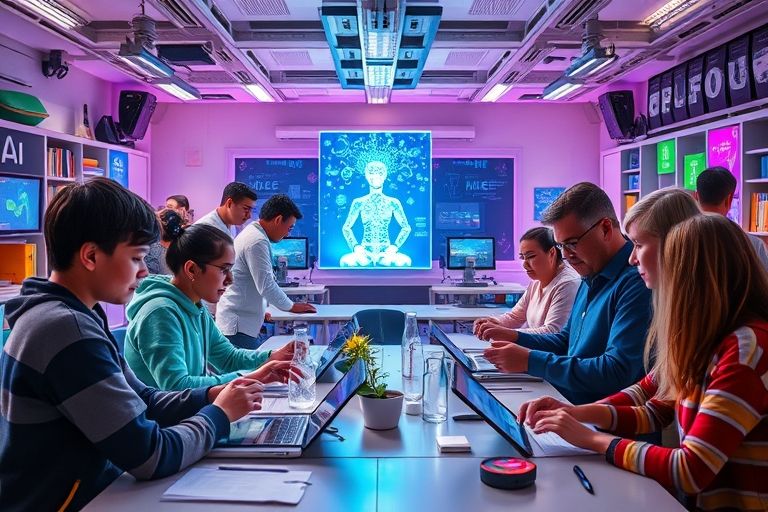Revolutionizing Education with AI Technology
Artificial Intelligence (AI) is making significant strides in various sectors, and education is no exception. AI is transforming the way students learn and making education more accessible and equitable. It is bridging gaps and promoting access to education for learners worldwide.
The Role of AI in Education
AI is transforming the traditional educational system by providing personalized learning experiences, improving student engagement, and enhancing learning outcomes. Here are some ways AI is revolutionizing education:
- Personalized Learning: AI algorithms can analyze student data and create personalized learning paths based on their learning pace, style, and interests.
- Intelligent Tutoring Systems: AI-powered tutoring systems can provide immediate feedback, support, and guidance to students, improving their performance and helping them overcome learning challenges.
- Virtual Classrooms: AI-powered virtual classrooms can simulate real classrooms, providing remote learners with a similar experience to in-person learning.
- Grading and Assessment: AI algorithms can grade assignments and assessments accurately, reducing the workload for teachers and providing students with instant feedback.
Examples of AI in Education
Many educational institutions and organizations are leveraging AI technology to improve learning outcomes. Here are some examples:
- Carnegie Learning: This AI-powered tutoring system uses adaptive learning technology to provide personalized learning experiences for K-12 students.
- DreamBox Learning: This platform uses AI algorithms to create personalized learning paths for K-8 students and provide real-time feedback to teachers.
- Coursera: This online learning platform uses AI technology to provide personalized recommendations to learners based on their interests and learning goals.
- Carnegie Mellon University: This institution uses AI algorithms to analyze student data and identify those at risk of dropping out, allowing for early intervention and support.
Advantages of AI in Education
AI technology is transforming the education sector, providing numerous benefits for learners, educators, and institutions. Here are some advantages of AI in education:
- Improved Learning Outcomes: AI-powered learning experiences can improve student engagement, motivation, and performance, leading to better learning outcomes.
- Personalized Learning: AI technology can provide learners with personalized learning experiences, catering to their individual learning needs and styles.
- Time and Cost Savings: AI algorithms can automate administrative tasks, reducing the workload for teachers and institutions and saving time and costs.
- Accessible Education: AI-powered virtual classrooms can provide access to education for learners worldwide, overcoming geographical and financial barriers.
Conclusion
AI technology is revolutionizing the education sector, transforming traditional learning methods, and providing equitable access to education for learners worldwide. With its ability to provide personalized learning experiences, improve student engagement, and enhance learning outcomes, AI is undoubtedly shaping the future of education.
